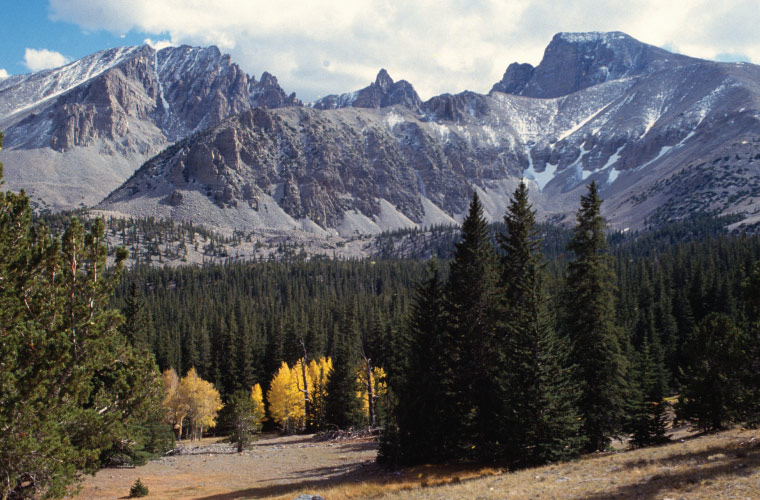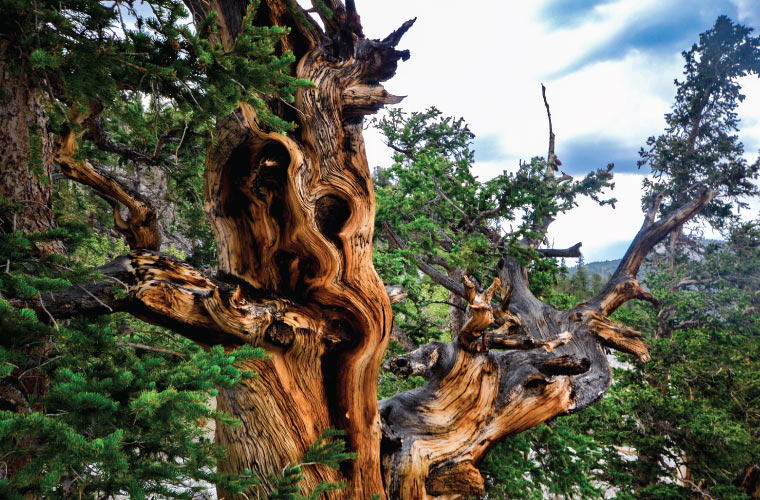Insider's Guide to Great Basin National Park
Posted by Kim Fuller on 3rd Jun 2022
As the largest national park in Nevada, Great Basin highlights some of the state’s most impressive natural treasures. The area was established as a national park in 1986, so 2016 marks Great Basin’s 30th anniversary celebration.
The Great Basin itself—what the park is named for—measures 200,000 square miles, with over 61 species of mammals and 800 species of plants. Visitors can enjoy the pristine environment that thrives in the park’s high mountain terrain and that continues to flourish all the way down into its vast valley. With a low number of annual visitors, Great Basin National Park has kept the outdoors feeling wild and made activities like fishing and hiking both accessible and peaceful.

Classic Adventures
Great Basin National Park is home to Wheeler Peak, one of Nevada’s tallest mountains at 13,063 feet. Visitors can drive 12 miles and gain over 4,000 feet of elevation on this scenic paved road, which reaches the 10,000-foot mark on the mountain. The drive starts in sagebrush and ends in a sub-alpine environment, so the vegetation is interesting and steadily changes as altitude is gained. Check out paved pullouts along the way for photo opportunities of nearby peaks and the valley below and take a moment to read about geological and historical highlights of the region. If you want to hike to the top of Wheeler Peak from the summit trailhead, it’s a challenging journey of 8.2 miles round-trip, with a 2,900-foot elevation gain.
Visitors can enter another park highlight, the Lehman Caves, with a guided tour. Lehman Caves is a marble cave that boasts natural features like stalactites, stalagmites, and over 300 rare shield formations. Two guided tours are offered. The Lodge Room Tour is ideal for families with young children. The more extensive outing is the Grand Palace Tour. The tours are led by park rangers, who explain the history, ecology and geology of the caves. Reservations are recommended, and same-day reservations are not accepted, so plan ahead and book early!

Secrets of the Park
This park is home to some of the oldest trees in the world—some are more than 4,000 years in age. The bristlecone pines in Great Basin National Park grow in isolated groves that endure harsh conditions, such as high winds, cold temperatures, and a short growing season. The trees grow very slowly and in high-elevation environments, making their wood very dense and resistant to rot, erosion, and insects. A bristlecone tree gets its name from its cones, each tipped with a claw-like bristle. Find these trees at the Wheeler Peak Grove, Mountain Washington Grove and Eagle Peak Grove in Great Basin National Park.
One of the park’s most celebrated annual events is the Great Basin Astronomy Festival, held in early autumn each year. The area is known for some of the best air quality in the nation so the night skies are very clear for viewing and they get even more amazing through the lens of a telescope. The event has many makes, shapes and sizes of telescopes for guests to use, so you can look at the sun, stars, planets, and even deep sky objects like galaxies and nebulae.
Immerse Yourself
The bristlecone pine gets a lot of attention in the park, but hikers on trails and overnight campers may spot a lot of wildlife, including elk, bighorn sheep, porcupine, coyotes, bats, sage grouse, great blue herons, yellow-bellied marmots, beavers, badgers, bobcats, mountain lions, and more.
Camping locations around Great Basin National Park include the Lower Lehman Campground, Upper Lehman Campground and Wheeler Campground. These sites are $12 per night, and are first-come, first- served. Larger sites at Grey Cliffs can be reserved as group sites for $25 per night.
How to Get the Most Out of Your Visit
- Great Basin National Park has no entrance fee, however, permits are required for certain activities in the park. There are admission charges for Lehman Caves, with an additional cost for tours that are offered daily, year-round, except for designated holidays. Reservations recommended.
- The park is open daily, year round (excluding Thanksgiving, Christmas, and New Year’s Day), from 8 a.m. to 4:30 p.m.PST, with extended hours in the summer.
- If you’re looking for the largest population of bristlecone pine at Great Basin, visit the Magic Grove near the center of the park.
- Prime hiking season in Great Basin National Park is June through September, and hit the trails in the fall to enjoy all the foliage. The park has more than 60 miles of hiking trails in the South Snake Range.
- Use the Wheeler Peak scenic drive to access trailheads to hikes such as the Alpine Lakes, the Osceola Ditch, the bristlecone pine interpretive trail, and the Wheeler Peak Summit trailhead.
- Great Basin has continually been rated the best spot for stargazing in North America, so be sure to stay up and enjoy the night sky.
- Rock climbers should know that the area in and around the park has rock that is hazardous and crumbly in nature. Climbers are encouraged to register at the park visitor center prior to their adventure. Accessible areas include The Diamond and the Wheeler Peak area.
- Horses are allowed on some trails, but they are not permitted on paved roads or in many campgrounds.
- The park has variably weather, so be prepared and bring layers! Late spring and early summer days can be hot in the valley, but still chilly at the higher elevations. In the summer, weather systems can move in fast and bring in fierce afternoon thunderstorms, and snow can fall at any time of year in the park’s higher elevations.
Written by Kim Fuller for RootsRated and legally licensed through the Matcha publisher network. Please direct all licensing questions to legal@getmatcha.com.
Share on:

